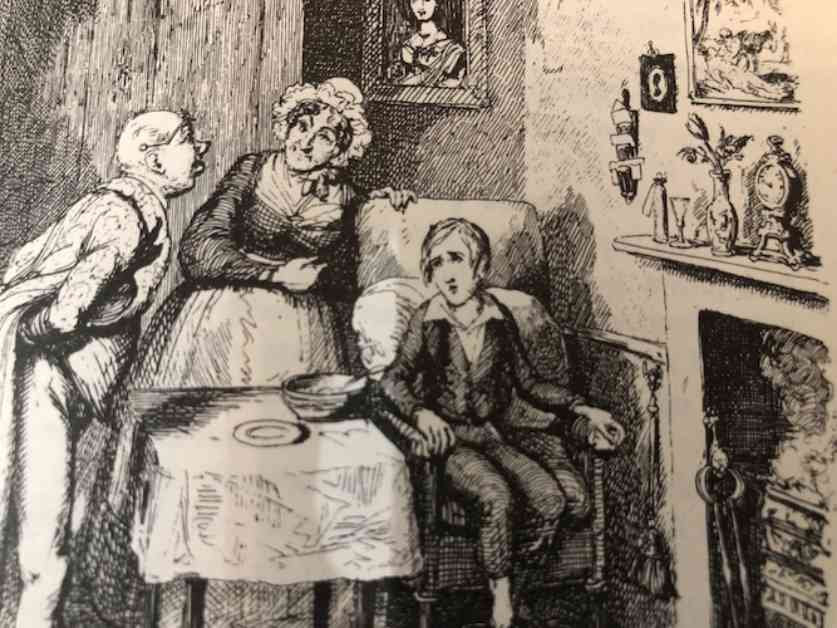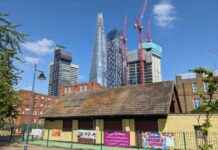John Vane: Unveiling the Intricacies of Victorian London in Charles Dickens’ Oliver Twist
Charles Dickens’s second novel, Oliver Twist, serves as a poignant reflection of the social landscape of Victorian London. Through vivid descriptions and intricate character portrayals, Dickens effectively contrasts the darkness of the city’s criminal underworld with the purity of the countryside. As readers delve into the pages of this classic work, they are transported to a time and place where poverty, crime, and moral decay run rampant amidst the bustling streets of London.
Exploring the Streets of London with Oliver and Bill Sikes
One of the most striking aspects of Oliver Twist is Dickens’s meticulous attention to detail when describing the various locations within London. In one memorable passage, Bill Sikes leads Oliver through the streets of the capital, painting a vivid picture of the city’s gritty underbelly. As they navigate through Sun Street, Crown Street, Finsbury Square, Chiswell Street, Barbican, Long Lane, and Smithfield, Oliver is exposed to the harsh realities of urban life. The cacophony of sounds and sights that surround him serves as a stark reminder of the city’s tumultuous nature.
The meat market scene in Smithfield further highlights the grim conditions that characterized much of London during that time. The filth and mire that cover the ground, coupled with the stench of the cattle and the fog that hangs heavily in the air, create a haunting atmosphere that lingers in the reader’s mind. Dickens’s ability to evoke such visceral imagery speaks to his skill as a master storyteller and social commentator.
Journeying through the various neighborhoods of London, from Holborn to Kensington, Oliver and Bill Sikes encounter a diverse array of characters and situations. As they make their way past Hyde Park Corner and towards Isleworth, the contrast between the bustling city streets and the tranquil countryside becomes increasingly apparent. Dickens skillfully weaves together these disparate settings to underscore the dichotomy between urban vice and rural innocence.
Exploring the Dark Underbelly of London’s Criminal Underworld
Much of the action in Oliver Twist takes place within the dark and squalid interiors where Fagin, the novel’s infamous antagonist, holds court. As a master manipulator and criminal mastermind, Fagin embodies the moral corruption that pervades the city. His intimate knowledge of the backstreets of Bethnal Green and his lair in Field Lane serve as a stark reminder of the seedy underbelly of London’s criminal underworld.
The character of Fagin is shrouded in controversy due to Dickens’s portrayal of him as a stereotypical Jewish villain. While the author later expressed regret over this depiction, it remains a troubling aspect of an otherwise powerful narrative. Fagin’s interactions with Oliver and the other members of his gang shed light on the pervasive influence of crime and poverty in Victorian London.
The Artful Dodger, another key figure in Oliver Twist, leads Oliver on a daring escapade through the streets of London, showcasing the city’s intricate social hierarchy and geographic divisions. From Barnet to Gray’s Inn Lane, Dickens meticulously maps out the various neighborhoods and landmarks that define the urban landscape. The juxtaposition of respectable districts like Pentonville with crime-infested areas like Saffron Hill underscores the stark disparities that existed within the city.
Reflecting on Dickens’s Portrayal of Victorian London
Oliver Twist stands as a testament to Dickens’s keen insight into the social and economic disparities of Victorian London. Through his vivid descriptions and multifaceted characters, the author paints a vivid portrait of a city teeming with both virtue and vice. The contrast between the bustling city streets and the serene countryside serves as a poignant reminder of the duality of human nature and the enduring struggle for survival in an unforgiving world.
As readers journey through the pages of Oliver Twist, they are confronted with the harsh realities of poverty, crime, and exploitation that plagued London during that era. Dickens’s scathing indictments of greed, cruelty, and hypocrisy resonate as strongly today as they did in his time. While the novel’s plot may rely on coincidences and melodrama, its underlying message of compassion and redemption remains as relevant as ever.
In Conclusion
Charles Dickens’s Oliver Twist remains a timeless classic that continues to captivate readers with its vivid portrayal of Victorian London. Through its intricate depiction of urban life, moral decay, and societal injustice, the novel serves as a powerful commentary on the human condition. As readers immerse themselves in the world of Oliver and his companions, they are confronted with the harsh realities of a bygone era, while also finding hope in the resilience of the human spirit. Dickens’s enduring legacy as a social critic and storyteller is evident in the pages of this iconic work, making it a must-read for anyone interested in exploring the complexities of Victorian society.





















